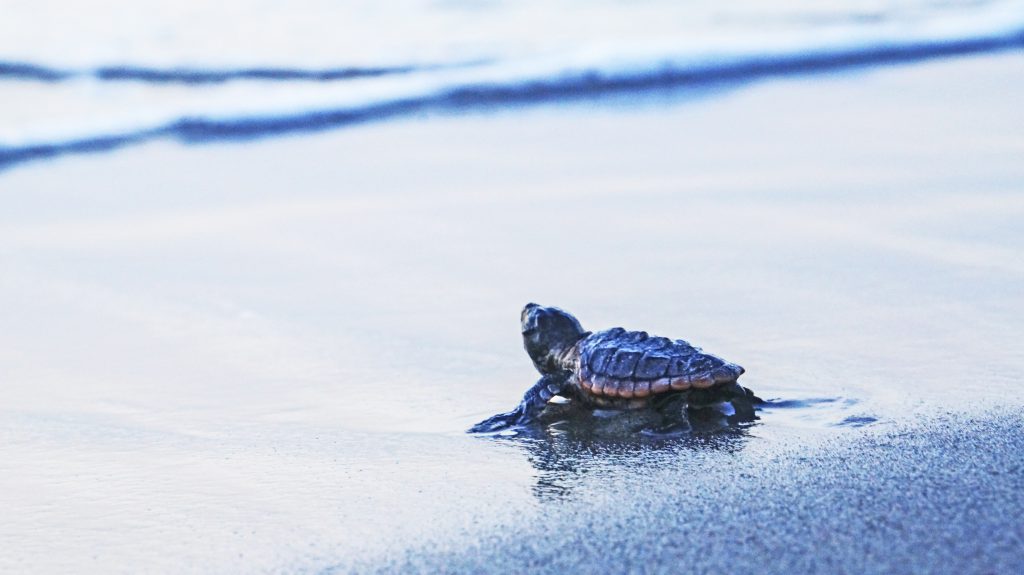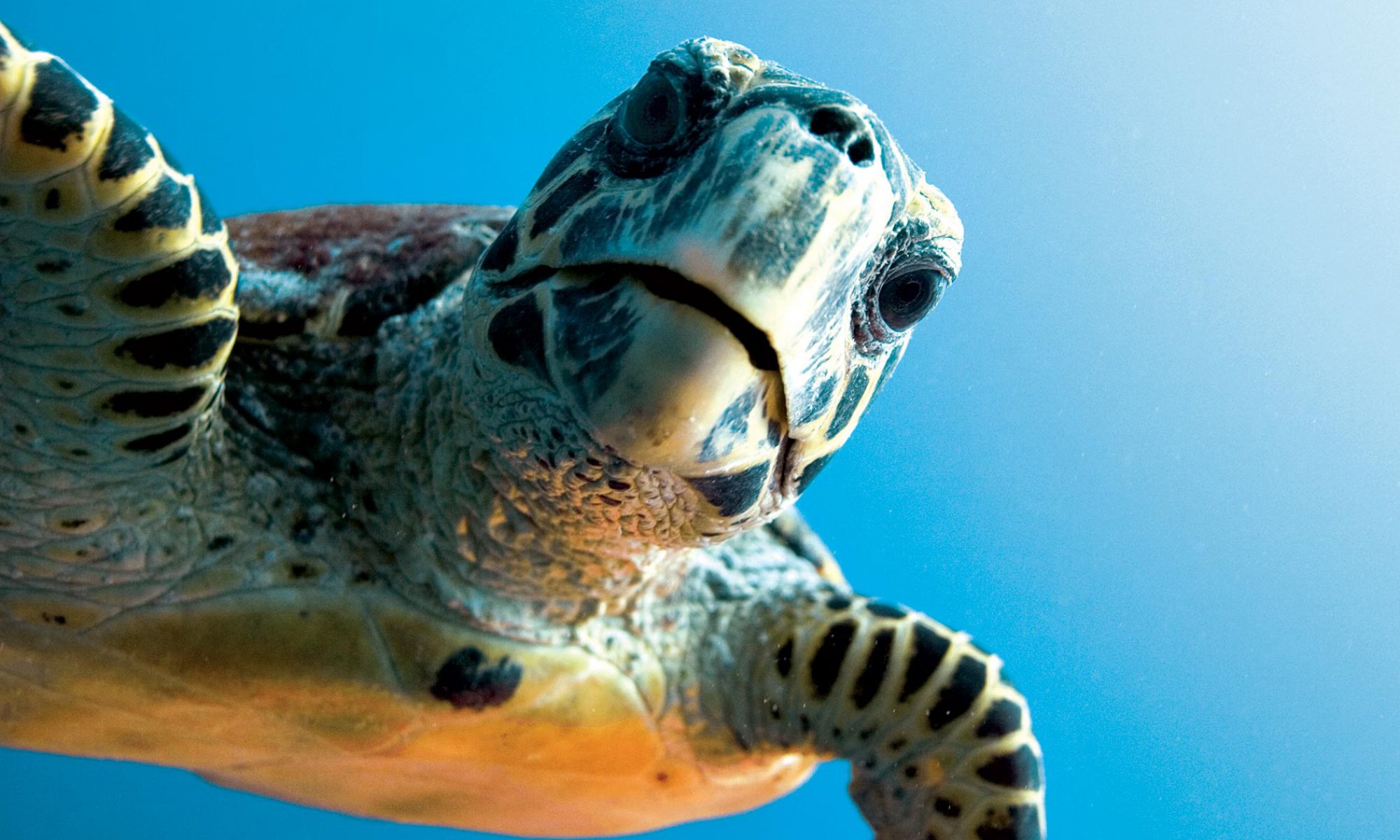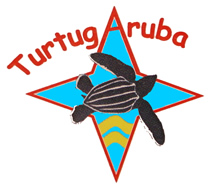The nesting season runs from March through September.
Hatching takes place from May to November.

Incubation takes approximately 60 to 70 days.
Look for the nesting barricades and please do not allow pets or children to go into them.

Did You Know…
- Sea Turtles return to their natal beach in order to nest.
- Sea Turtles use the earth’s magnetic field to guide them on their long journeys at sea.
- Sea Turtles do not nest every year, but rather every 2-5 years.
- The Leatherback Sea Turtles of Aruba lay about 115 eggs a clutch.
- The Leatherback female will nest 6 – 8 times a season.
- It is estimated that only 1 in 1000 hatchlings survives to maturity.
- All species of sea turtles are endangered and need our protection.
What To Do If You See a Sea Turtle Nesting
If you see a sea turtle nesting on the beach, it’s important to respect the animal and help protect it. Here’s a list of what to do and not do:
- Keep your distance – Stay at least 30 feet (10 meters) away.
- Stay quiet – Speak softly and avoid sudden movements.
- Turn off lights – Flashlights, camera flashes, or phone lights can disorient turtles.
- Observe from behind – Always stay behind the turtle; never get between her and the ocean.
- Watch your step – Avoid walking on tracks or the nesting area to preserve evidence for researchers.
- Report it – Please call TurtugAruba sea turtle conservation group so they can mark and monitor the nest. 297-592-9393
Can You Notify Me So I Can See the Hatchlings?
- Hatching takes place from May to November.
- Incubation takes approximately 60 to 70 days.
- There is no precise way to know when the hatching will occur during the ten-day window.
- We do not make any announcements as to the days and locations in order to not draw crowds around the nests.
- Some nests have the nesting date marked on them so you will have an idea of when they are due.
- You may occasionally see our volunteers around checking the nesting sites. Say hello.
- Most often the hatching occurs at night.
- Ask at your hotel desk if they have a call list for when a local nest hatches.
- Please do not email us to be alerted as we do not have a list for this purpose.
Other Experiences and Information
There is no way to know or predict when the turtles will hatch. So, there is no list or calendar.
You just have to be close by to see when the sand in the middle of the nest area begins to fall down into the hatching area. Small little openings will occur where the sand begins to sift downward.
If you see a crowd over at one of the barricades, then odds are something is happening.
Most often the hatch happens at night. Moonlight and the especially full moon seem to call to them to hatch somehow. But some hatches occur during daylight hours.
Even if you miss the hatch – you might be able to watch the volunteers do an inventory of the nest site the next day. Usually, a crowd will form for this event as well. They try to do this early as possible in the morning after the hatch as there may be some hatchings trapped in with the empty shells.
Often, they find a few hatchlings that are still alive as they count the eggs. They are usually exhausted from trying to dig their way up and out of the nest. Other hatchlings may have pushed them down as they struggled to reach up to the open air. After a period of rest time to allow those found alive to get their breath back – they often release them into the sea from near the nest area. Many people stay to watch this happen.
Ask the volunteers when they plan on releasing them and you can come back after an hour or two to catch the event.
Ask the volunteers onsite – they know the latest info and are often happy to say hello and educate.
If you are going to be on the beach anyway why not set up your chair or blanket near one of the barricades and help warn people about going inside or allowing their dogs or kids to go inside. In that way you can volunteer to help in a small way. You may also be there when they come to check on the nest – which they do often.
Please report ANY Aruba turtle activity to the 24-hour Turtle Hotline:
+297-592-9393
If you wish to help the conservation of Sea Turtles in Aruba, please make a donation to:
TurtugAruba
Aruba Bank
Accnt #4006684



